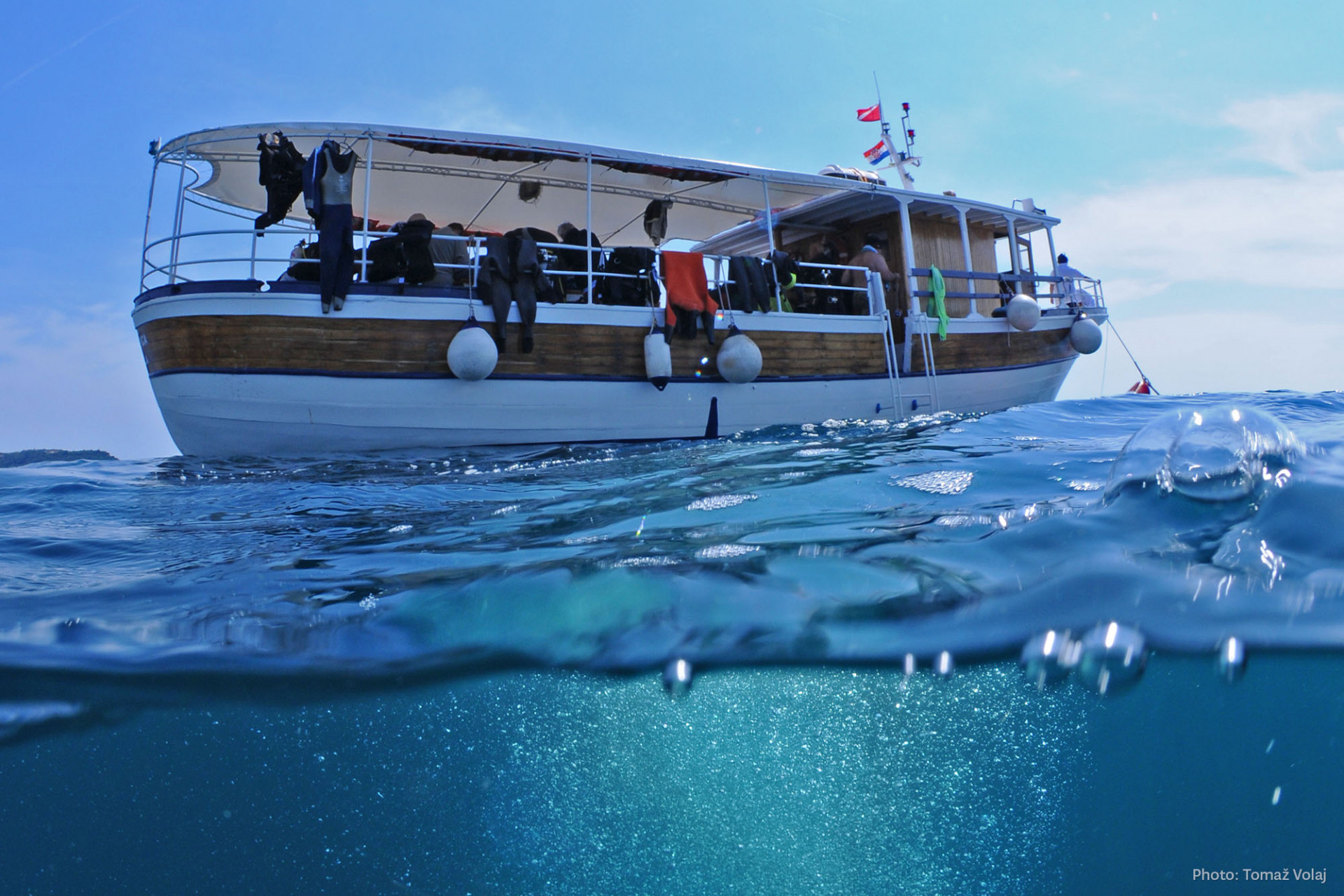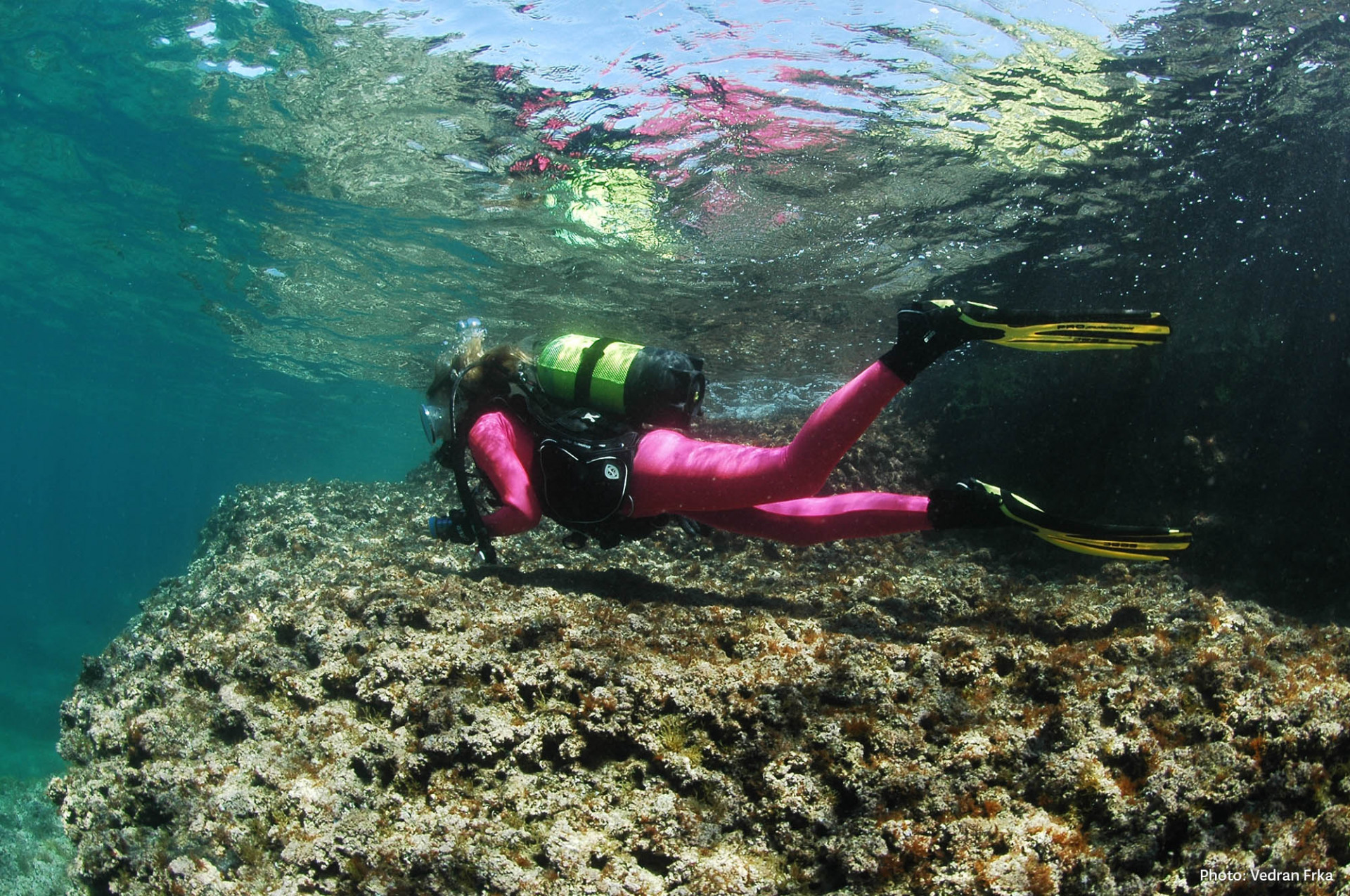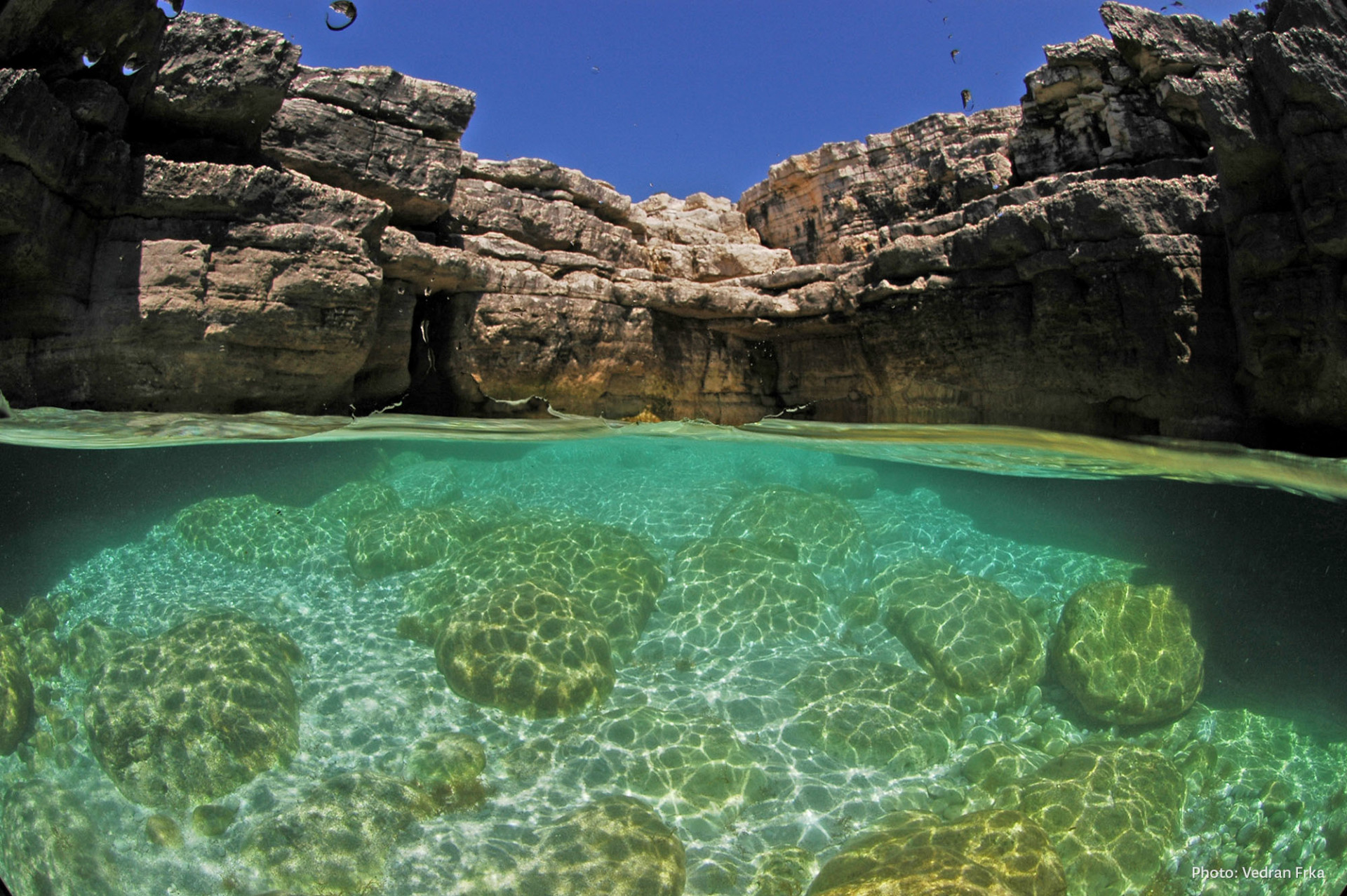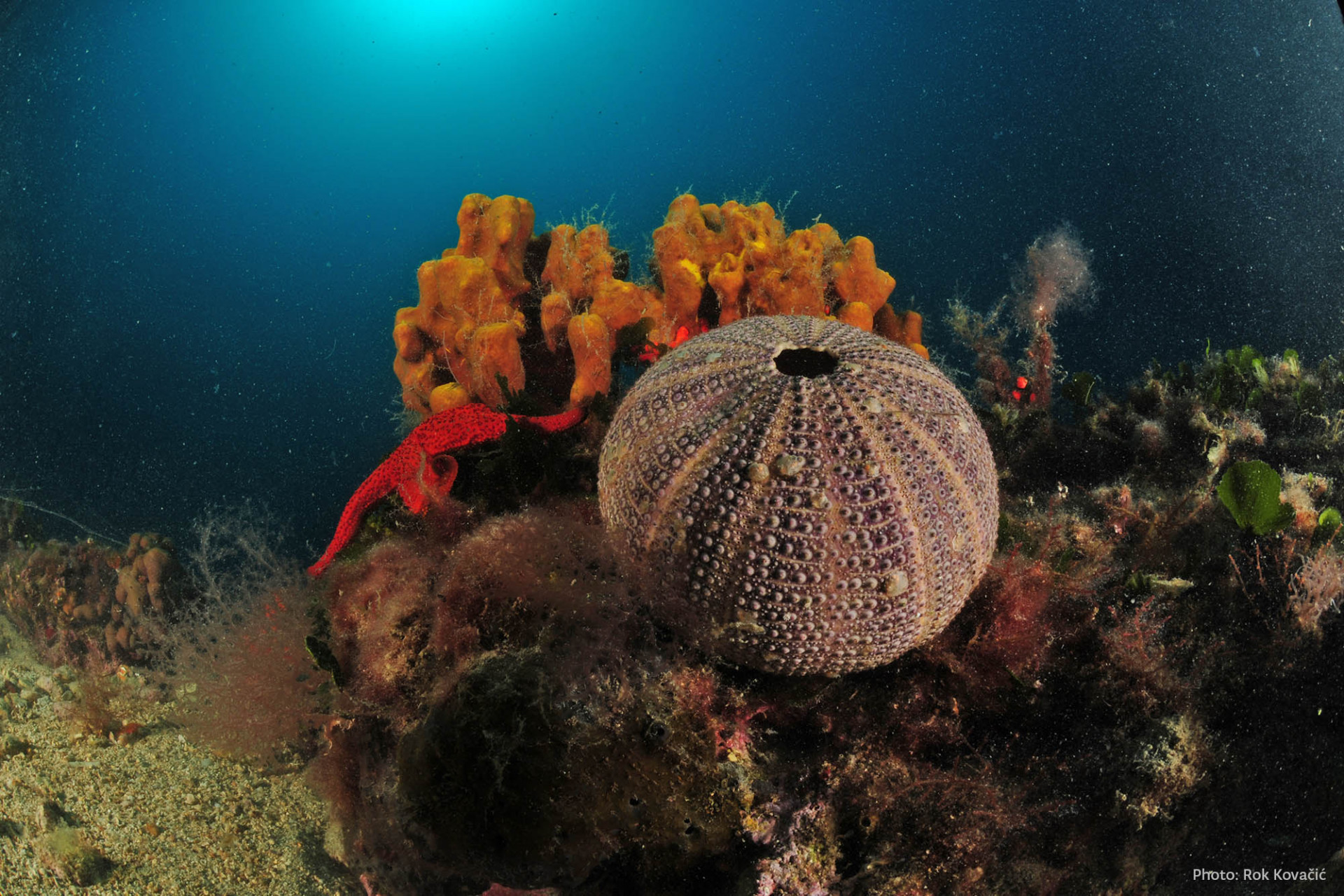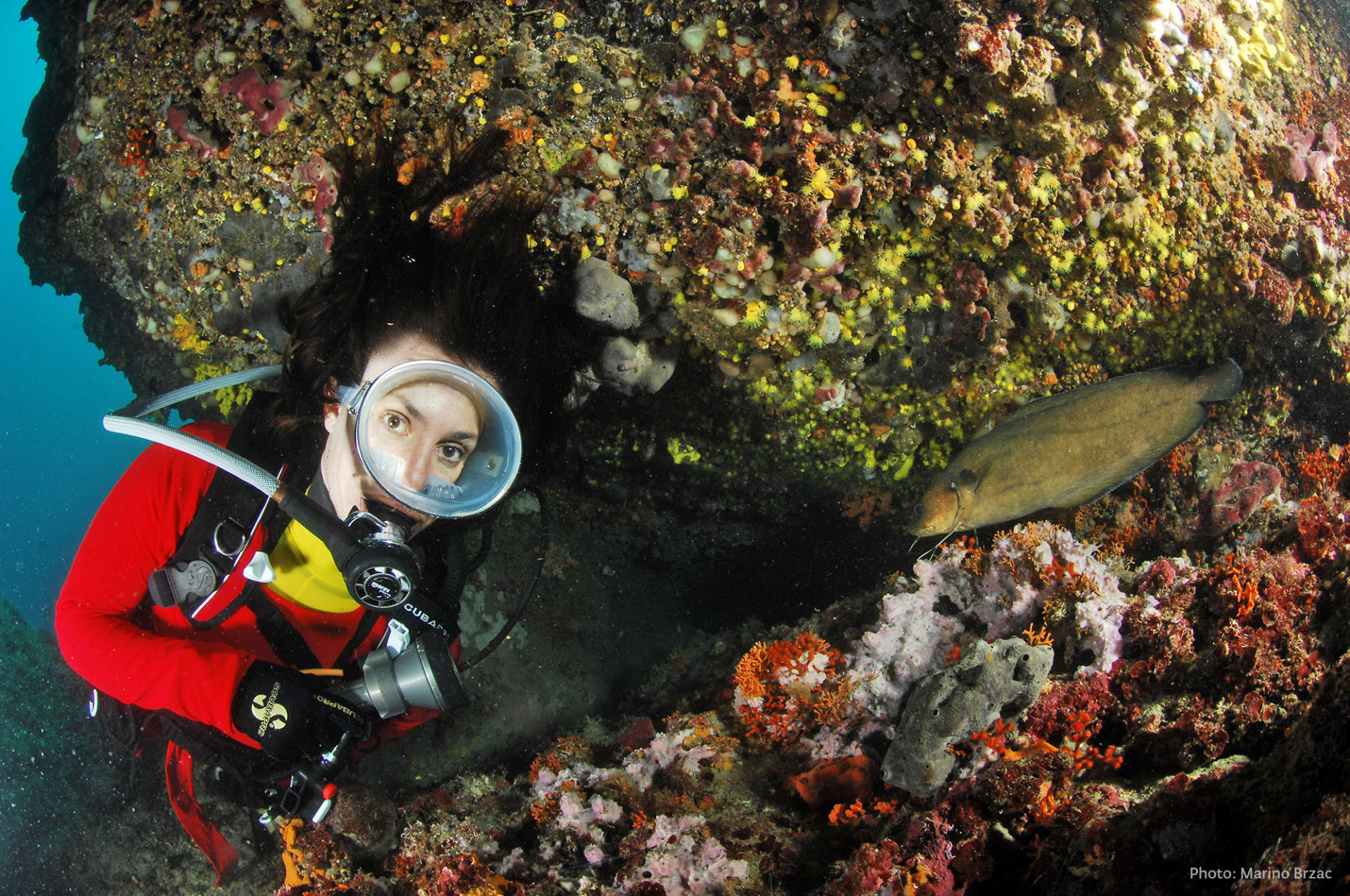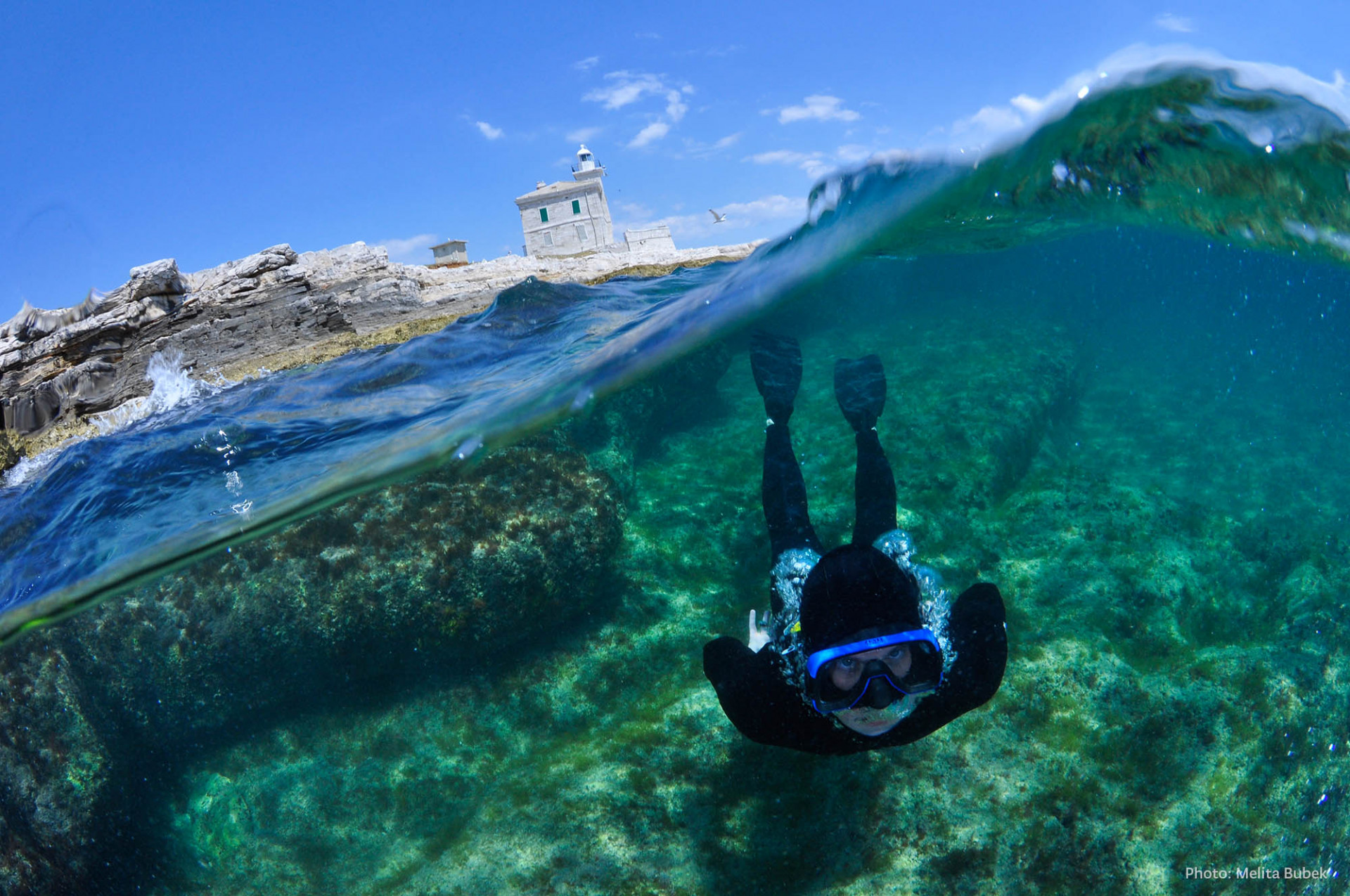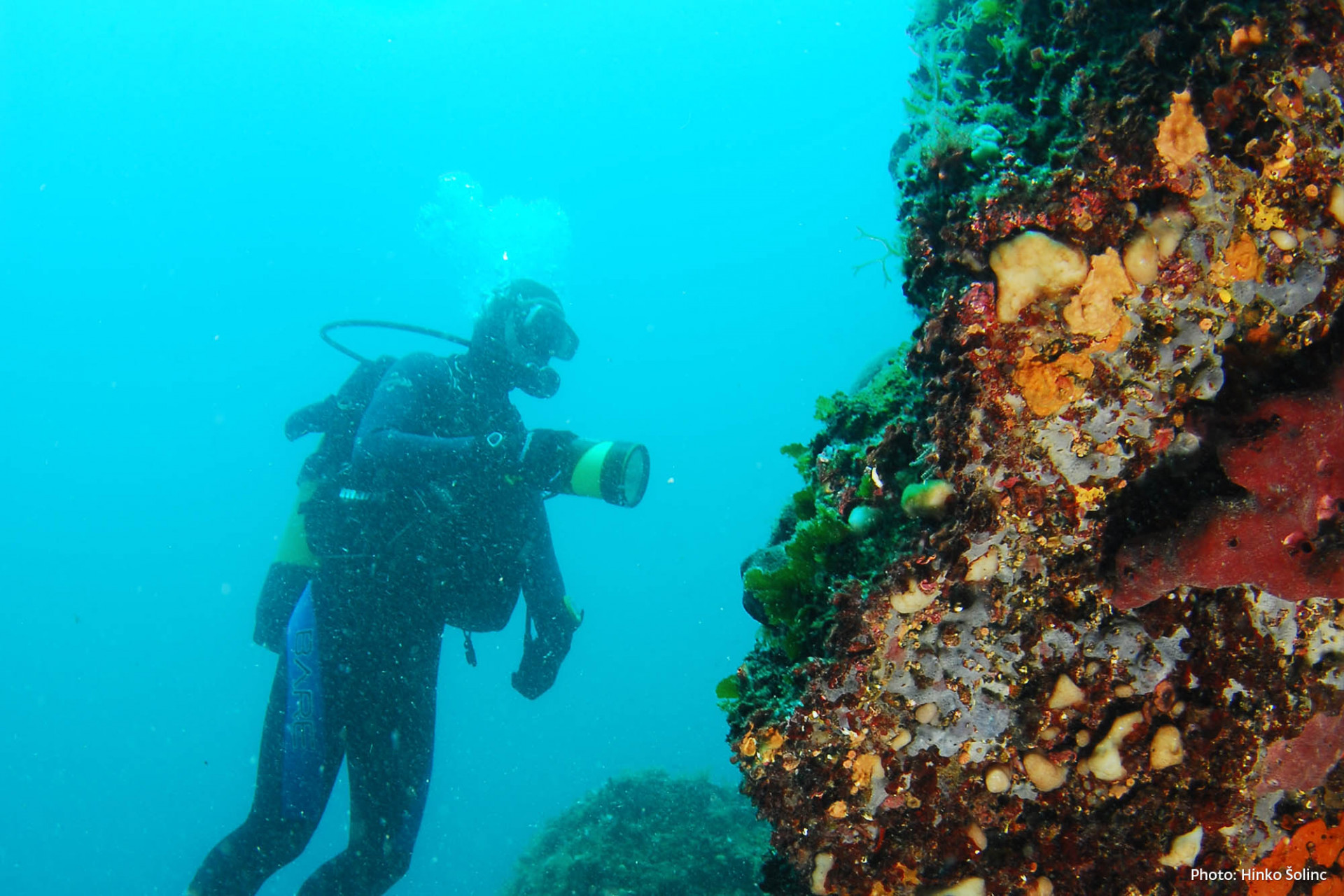The waters of the Brijuni National Park are extraordinary for scuba diving, which is organized through guided groups of divers that can view and photograph the seabed of the national park.
Physical articulation of the archipelago
As far as diving is concerned, there is a wide choice of themes and depths and almost every demand can be met. The physical articulation of the archipelago, its islets, rocks and shoals, the indented coastline and the different exposition of bays, capes and passages to squalls and waves and the different kinds of rocky and sedimentary sea beds point to the fact that in this relatively small area (around 40 km2), many species of marine organism can be seen. The seabed of the Brijuni National Park, by its primary characteristics, does not vary from other areas of the northern Adriatic. The diversity and the density of populations and the preservation of natural habitats are its main values. Particularly rich and diverse is the fish stock that prospers protected from overfishing.
Dense fish population
The fish populations are representative by their density and the size of single specimens. Besides the common, commercial species like two-banded breams, groupers, dentexes, forkbeards, black umbers, etc., there are numerous and beautiful fish from the blenny and labrid species. It is the fish fauna that makes the waters of Brijuni unique and different from other parts of the Adriatic.
Brijuni as refuge and "nursery" of species
The area of Brijuni is the only island group in the northern Adriatic that has resisted the adverse consequences of industry and the expansion of tourism, which again makes it very unique and priceless. Its waters are the only refuge and "nursery" for many plant and animal species which, under the influence of pollution, tourism and overfishing are quickly disappearing in other parts of western Istria and northern Adriatic.
 Parks of Croatia
Parks of Croatia
 EU projects
EU projects English
English

